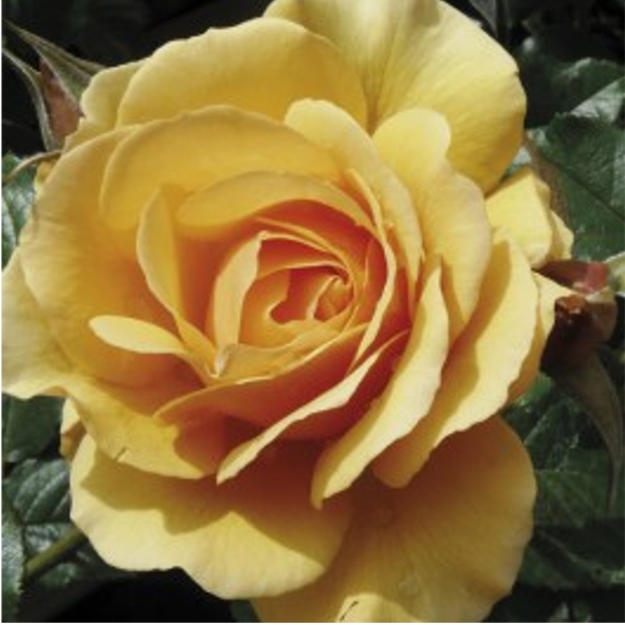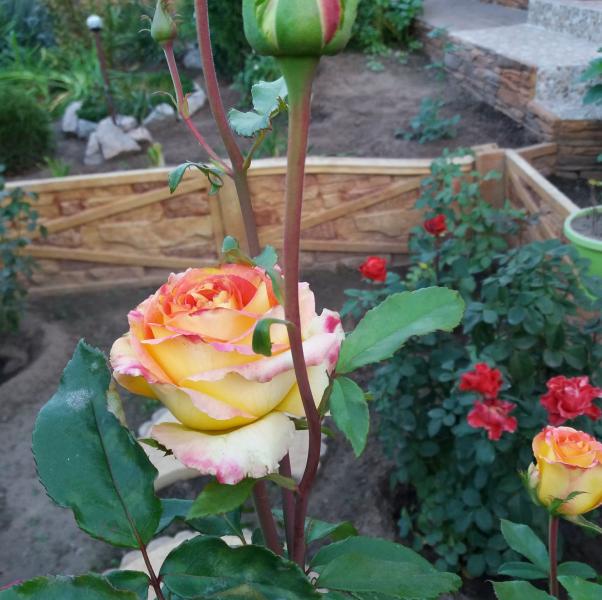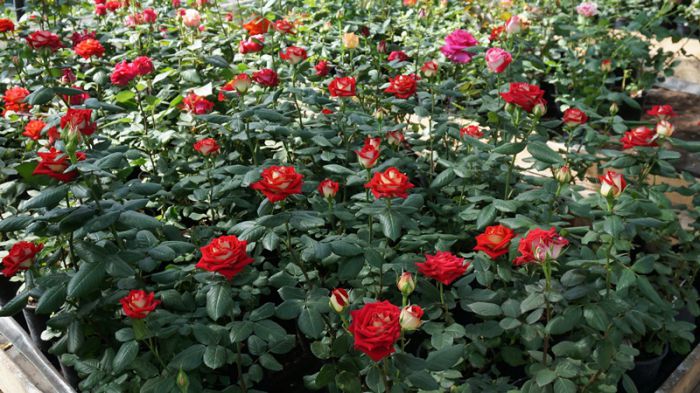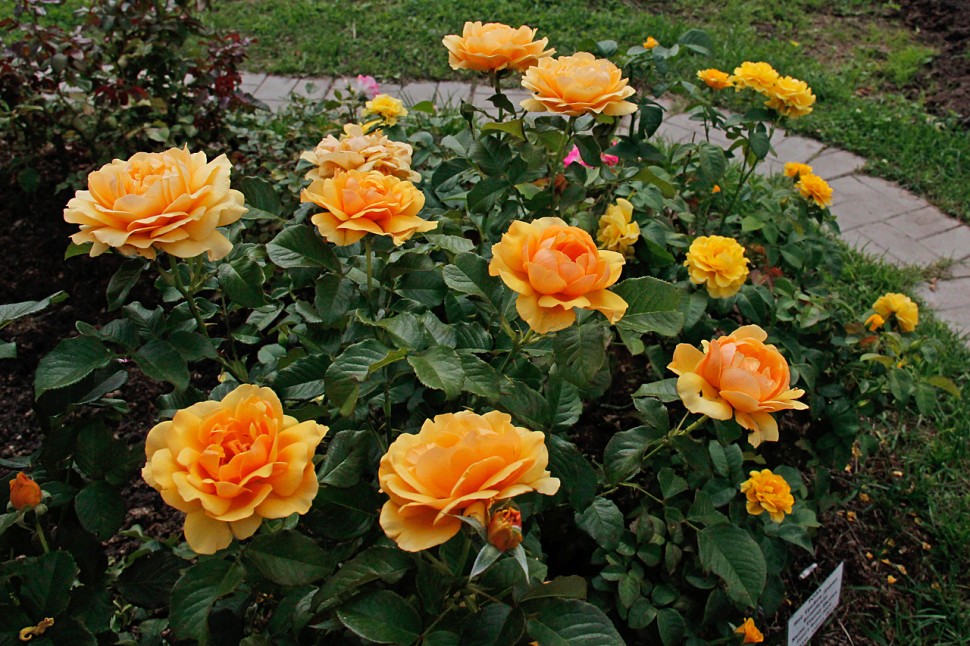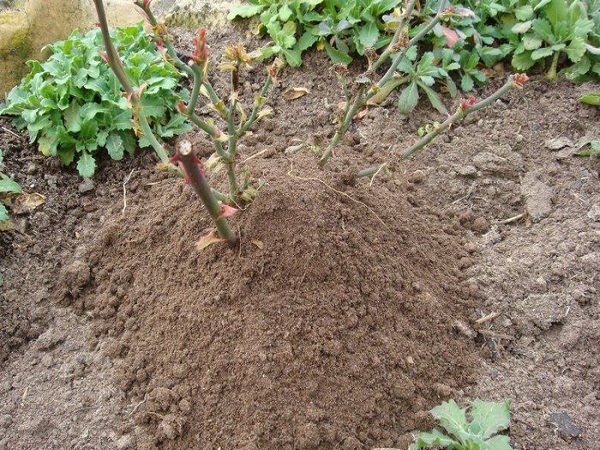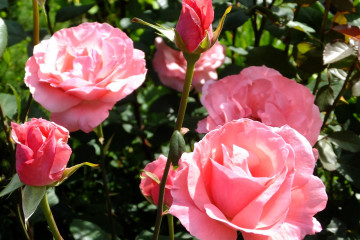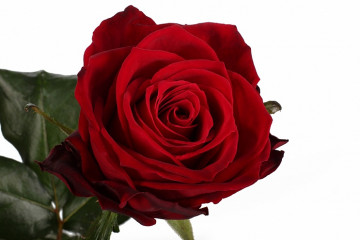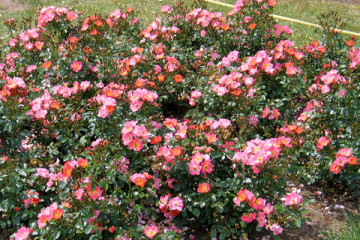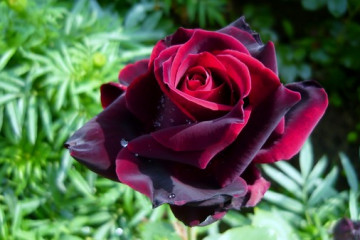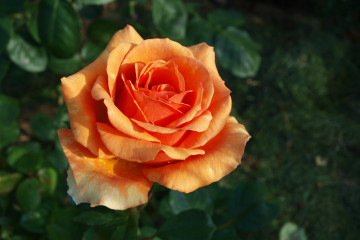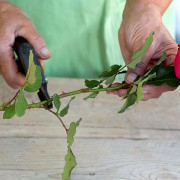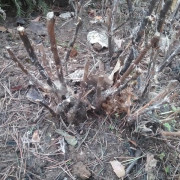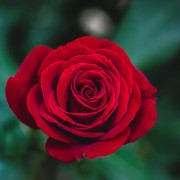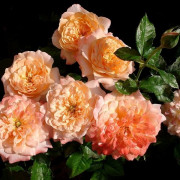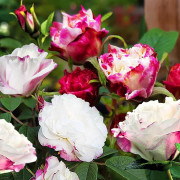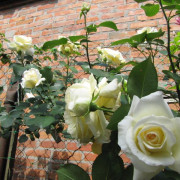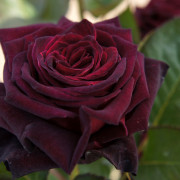Rose Amber Queen
Content:
This abundantly flowering plant of continuous life, covered with large inflorescences, is included in the floribunda group in accordance with the Oxford Federation in 1976. Rose Amber Queen is very beautiful, in great demand among flower growers. But how to plant it correctly and what kind of care to provide later, not everyone knows, therefore they make mistakes in growing.
What is this grade
The widely known variety - the floribunda rose Amber Queen - appeared as a result of the work of the breeder A. Harkness from England on crossing different varieties of roses: hybrid tea with polyanthous varieties. The size and flower shape, a wide range of colors are inherited from the hybrid tea species. Polyanthus varieties were endowed with disease resistance and frost resistance.
Short description
It is surprising that in a cold climate the amber tone of flowers and the bronze tint of young foliage are so beautifully and harmoniously combined. Terry inflorescences of a spherical shape with a deep color of yellow amber with a diameter of 8 cm grow on bushes 75 cm high.
Advantages and disadvantages of the variety
Rose Amber Queen has the following benefits:
- the first to bloom and the last to bloom (with the onset of cold weather);
- blooms profusely;
- is resistant to viruses that cause wilting of roses;
- grows successfully in temperate climates;
- not prone to freezing.
Increased requirements for the place of cultivation of rose bushes are considered the main and only drawback of the variety.
Use in landscape design
Every corner of the garden is transformed with the appearance of Amber Queen floribunda rose bushes. In the complex of measures aimed at landscaping, this plant fits perfectly into hedges and group compositions on lawns. In any style of landscape design, roses of this species are appropriate.
Growing a flower
Rose Amber Queen is successfully grown outdoors. In order for her natural abilities to develop, the flower stalks remain strong and fruitful, it is required to comply with the rules of planting, care, savings during the wintering period.
In what form is the landing
Roses give at the end of flowering fruits that contain seeds. They become a breeding medium that is easy and simple to obtain. But you can prolong the genus of plants with the help of seedlings.
Location selection
Site selection is of particular importance. Plants should not be planted in a windy area. It is necessary to arrange plantings on the sunny side, illuminated in the morning or in the evening, so that the rose petals do not burn.
How to prepare the soil for planting
Roses prefer black soil. They grow well on loams, but such soil must first be provided with organic matter. The depth of the groundwater is important (not less than 1 m is suitable). The growth, quality of flowering is influenced by the acidity of the soil (pH 6.0 to 6.5).The soil can be acidified by the introduction of manure or peat. Excess acid can be removed by adding ash or lime.
Planting procedure step by step
Instructions on how to properly plant rose seedlings:
- Prepare a hole for planting with a depth of about 60 cm.
- At the bottom of the hole, lay medium-sized pebbles, crushed stone or gravel as drainage of a 10 cm layer.
- Cover up a layer (10 cm) of organic fertilizer in the form of rotted manure or compost. In this case, it is recommended to mix manure with a layer of fertile soil.
- On top, garden soil is poured in the form of a dome 10 cm high.
- An aqueous infusion is prepared in the form of a chatterbox from clay soil.
- The roots of the seedlings are immersed in the resulting infusion for some time.
- The roots are straightened, and the bush is immersed in the prepared hole so that the rhizome goes underground, and with it the root collar.
- The roots are covered with earth, the soil is compacted around the cutting.
- Watering is in progress.
- The soil around the seedling should be covered with peat.
Plant care
Care comes down to following some rules:
- timely watering;
- top dressing;
- periodic pruning;
- transplant as needed.
Watering rules and humidity
Floribunda Amber Queen does not require frequent watering, 10 liters of water is enough 1 time for two weeks.
Pruning and replanting
Experienced growers use types of pruning bushes in different combinations. Distinguish between spring, summer and autumn. This combined approach ensures a continuous flowering process. The goals are different:
- achieve early mass flowering;
- give the bushes a certain shape.
Features of wintering a flower
Winter brings complications to the life cycle of the plant kingdom. On the eve of the arrival of cold weather, the hilling of the bushes is performed. To save the plant from frost will allow the hilling of the bushes with dry leaves, dried grass.
Blooming rose
Floribunda rose Amber Queen pleases with its unique inflorescences. And in order for this joy to be long-term during the flowering period, the plants need full feeding, watering.
Sometimes the rose doesn't bloom. The reasons may be the following circumstances:
- a diseased seedling was planted;
- the rose planting site was not seriously selected and prepared;
- the plant needs sunlight;
- pruning of the bushes is not done well enough.
A period of activity and rest
In the life of plants, there is a cyclical nature of the growing stages. Periods of active growth, flowering are replaced by a period of rest. Care is regulated accordingly.
Flower propagation
Shrubs can be propagated in several ways:
- seeds;
- cuttings;
- you can divide the bush into parts;
- you can take offspring from roots or layers.
Morning and evening hours are the best times to cut cuttings. You can determine the readiness of a branch for cutting by the condition of the thorns. If they break off easily, then it's time to start harvesting cuttings.
The cuttings are placed in water under a hood. When they give roots, they can be planted in the ground.
Harvesting seeds is pretty simple. How to do it right:
- From the cut fruit, you need to get the seeds.
- Rinse the seeds in a weak bleach solution (for 1 glass of water and 2 teaspoons of bleach).
- Then gently rinse off the bleach.
- Soak the seeds for a day in a 3% hydrogen peroxide solution.
- Seeds that float must be removed, they do not germinate.
You need to plant seeds at home like ordinary seedlings. When two leaves appear, it is dived, and then planted in open ground.
Diseases, pests and ways to control them
Rose Amber Queen is disease resistant. In dry, hot summers, it may be slightly affected by powdery mildew. In general, it has good endurance. If white bloom is found, the bushes must be treated with fungicides.
Aphids can also attack a rose. You can fight it with the help of insecticides.
Flower lovers can independently grow a wonderful variety of roses in flower beds, along curbs, as well as indoors in containers. Inflorescences in bouquets are good.Many are satisfied with the fact that the rose blooms several times (re-blooming). In addition, the variety is resistant to weather changes and diseases.
